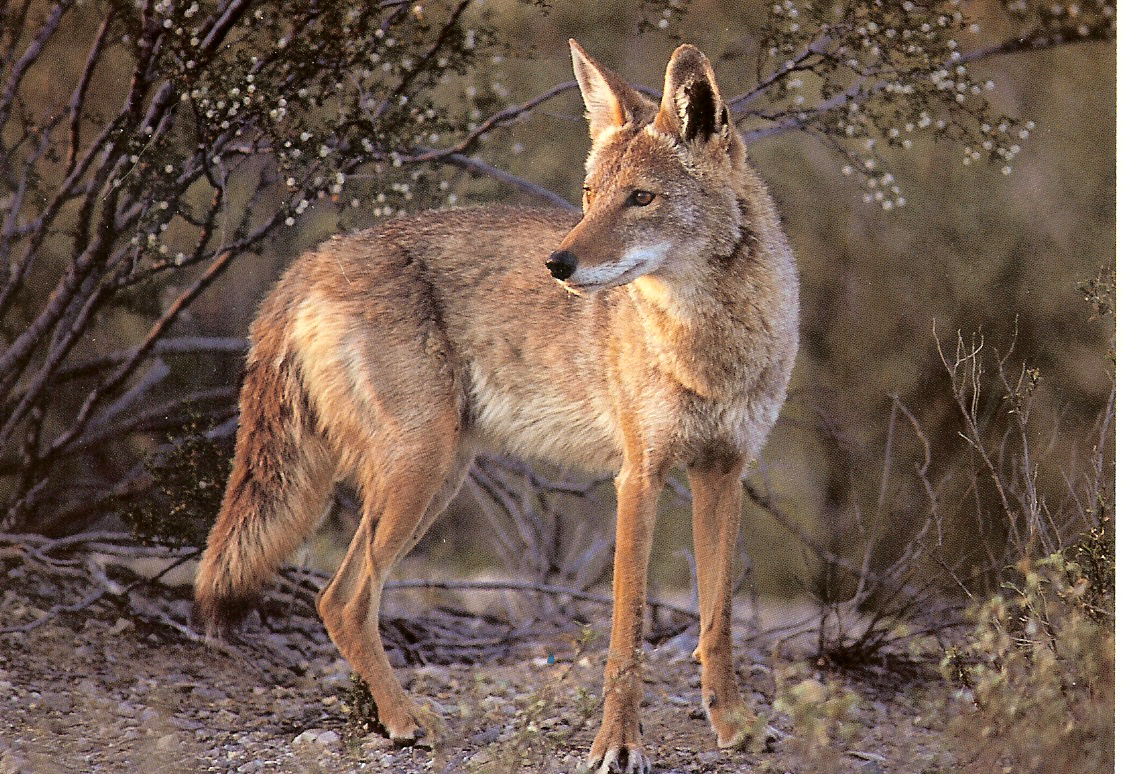Suburban Coyotes

Chanhassen is far from alone in hosting coyotes. Hardly any animal in America is more adaptable to changing conditions than the coyote, which can live just about anywhere. They are found in deserts, swamps, tundra, grasslands, brush, and dense forests. They have also learned to live in suburbs and cities like Los Angeles, New York, Phoenix, and Denver.
It's important to know that coyote attacks on people are extremely isolated and very rare. Minnesota has never seen a documented case of a coyote attack on a human.
Coyotes look like miniature collies or German shepherds. They have erect, pointed ears, slender muzzles, and bushy tails. Most coyotes are brownish-gray in color with a light gray to cream-colored belly. However, a coyote's color varies and may be darker or lighter depending on the time of the year.
Coyotes are extremely wary of human beings in areas where they are hunted or trapped. However, in urban and suburban areas, where they are less likely to be harmed and more likely to associate people with an easy and dependable food source, they can become very bold. They will come up to the door of a house if food is regularly present.
Why can't coyotes be removed?
Removal programs do not work to reduce coyote populations. When coyotes are removed from an area through artificial means, other coyotes quickly fill the void, with more females reproducing and breeding larger litters. In addition, the only effective methods of coyote removal are leg-hold traps, neck snares, or poison, all of which present a much more significant risk to domestic animals and children than coyotes.
How can I prevent my pet from being attacked by a coyote?
One of the keys to the coyote's success is its diet. A true scavenger, the coyote will eat just about anything, including small livestock, poultry and deer, snakes and foxes, rodents and rabbits, birds, frogs, grass and grasshoppers, pet cats and cat food, pet dogs and dog food, carrion, fruits and vegetables, doughnuts and sandwiches and just plain garbage. A coyote does not differentiate between its usual diet of raccoons, squirrels, woodchucks, etc., and domestic animals such as cats and dogs. Follow these tips to reduce the chances of a coyote encounter:
- Don't feed coyotes, even unintentionally. Feeding pets indoors whenever possible, picking up any leftovers if feeding outdoors, and storing pet and livestock feed where it is inaccessible to wildlife are good habits.
- Bird feeders should be positioned so coyotes can't get to the feed. Coyotes are attracted by bread, table scraps, and even seed. They may also be attracted by birds and rodents that come to the feeders.
- Don't allow pets to run free. Keep them safely confined and provide secure nighttime housing for them. Walk your dog on a leash and accompany your pet outside, especially at night.
- Secure garbage containers and eliminate garbage odors.
- Trim and clean, near ground level, any shrubbery that provides hiding cover for coyotes or prey.
While it may not be illegal to send a dog after a coyote, it is not recommended, no matter the dog's size or temperament. Coyotes are wild animals and will protect themselves, their territory, and their pups much more aggressively than domestic animals. Although your dog may be significantly larger than a coyote, there is no way to know if the coyote is alone or with several others, so a fight could easily be mismatched. It's also important to be aware that coyotes are still canines and, therefore, can carry and transmit all dangerous diseases to domestic dogs, such as rabies, distemper, and parvovirus.
What can we do to discourage coyote contact?
By doing nothing when we see coyotes, we've caused them to become less fearful of humans. Often, if we see a coyote, we'll stop and look at it without disturbing it. This teaches the coyote that humans are not a threat.
Hazing—a series of activities that re-instills the fear of humans in coyotes—has been shown to be the most effective tool in co-existing with coyotes. The city of Denver had the same issue with coyotes now being experienced in Chanhassen. After trying artificial removal for years with no success, a hazing program was implemented. Once residents began using this technique, coyote sightings dropped drastically.
How does hazing work?
It's simple. When you see a coyote, make yourself large, wave your arms, shout, blow a whistle, bang pots, spray a hose, and even charge after them if you feel comfortable enough.
The goal is to scare the coyote entirely out of the area. Do not stop before it completely disappears, or you will reinforce its belief that humans are harmless. A coyote that is very habituated to people may take up to five separate hazing experiences before it re-learns its fear of humans. It will then teach the others in its family group that humans are to be avoided.
It's essential to haze coyotes whenever you have contact with them. This means any time you are outside and the coyote sees you. If done from inside the house or a car, the coyote will not connect the hazing behavior with humans. For hazing to be most effective, every resident should participate.
Questions?
On the positive side, coyotes play an essential role by helping to control other wild animals frequently found in Chanhassen, including rodents and Canadian geese.
